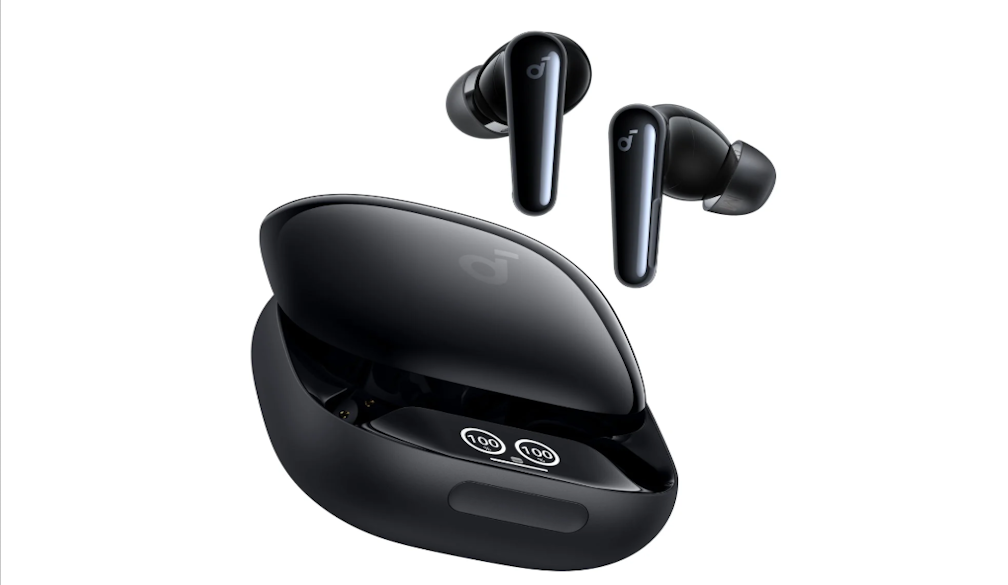Wireless And True Wireless Earbuds: What’s The Difference?

While browsing for earbuds, you’ll frequently see the terms wireless and true wireless, but what do either term even mean? Both variants remove the need for traditional wired connections; however, they differ in terms of design, functionality, and user experience. While wireless earbuds have a cable linking the two earpieces, true wireless earbuds are completely independent with no cables whatsoever.
There's been a lot of talk lately about wireless earbuds and "true wireless" earbuds. What's the difference? Which one should you choose? This article will break the subject down for you to ensure that you can make the best choice for your requirements. Keep watching!
What Are True Wireless Earbuds?
True wireless earbuds are wireless earbuds that don't come with a cable connecting the earbuds. Instead, each earbud is independent.
This permits an even wider range of movement because you're not restricted by a wire that connects to the earbuds. True wireless earbuds feature built-in microphones, making them suitable for hands-free calls.
One disadvantage of truly wireless headphones is that they are generally more expensive than regular wireless earbuds. Furthermore, since each earbud is a self-contained unit, there's a higher chance of losing one. Additionally, in the event that the battery fails in one of the earbuds, you'll be able to use the remaining earbud until it's charged to recharge.
What Are Wireless Earbuds?
Wireless earbuds can connect with your phone through Bluetooth. They usually include a cord to connect to the earbuds itself however, they do not have any cords connecting them to your phone or music players. This lets you move about more freely, without being tied to your phone.
Additionally, the majority of wireless earbuds are equipped with microphones, which means you can use them for hands-free calls. However, Bluetooth is limited by its range, and you'll have to ensure that your device is within 33 feet of the earbuds. The good thing is that wireless earbuds are generally cheaper than traditional wireless earbuds.
How Do Wireless Earbuds Differ from True Wireless Earbuds?
Understanding the distinction between wireless and truly wireless earbuds can help determine which one will be best for your needs. Here's a brief overview of the main distinctions:
Battery Life
Wireless earbuds usually come with a longer battery lifespan than genuine wireless headphones. This is due to the fact that they are not as energy-intensive as wireless headphones. True wireless earbuds require more power as each earbud is completely self-contained and includes an internal battery. The battery time of wireless earbuds usually can last between 48 hours and a half. The battery life of the true wireless earbuds usually ranges from 24 hours.
Automatic Connectivity
The majority of wireless earbuds instantly connect with your phone when they are on. But this isn't the case with genuine wireless headphones. With true wireless earbuds, it is common to connect each earbud manually to your phone. Additionally, if one earbud fails to connect or loses its connection to the other, it will typically remain connected. However, this isn't the case with wireless earbuds, in which both earbuds can be disconnected from their connection in the event that one of them fails.
Built-in Smart Assistants
Certain wireless earbuds have built-in smart assistants like Siri and Google Assistant. You can use your voice to control the headphones. True wireless earbuds usually don't come with an integrated intelligent assistant. However, you could still use your voice to control your earbuds if you have a smart assistant installed on your device.
Range
The range of wireless earbuds is generally restricted to 33 feet due to their Bluetooth connection. However, the range of wireless earbuds is not restricted by Bluetooth, and therefore, you are able to utilize them at a greater distance from your phone.
However, their range will be limited by the life of the battery that the headphones have. In general, true wireless earbuds can travel up to 30 feet. It's important to keep in mind that obstacles can impact the range of wireless headphones.
Charging Method
The majority of wireless earbuds come with a charging case, but true wireless earbuds don't. In fact, every earbud gets recharged separately. A charging box for wireless earbuds generally has enough capacity for several uses, which means they are in good condition and ready to go. Chargers for genuine wireless earbuds are generally smaller and can only hold enough battery for one usage.
What Are the Pros and Cons of Wireless Earbuds?
It is important to understand the benefits and drawbacks of wireless earbuds prior to purchasing the product. In this way, you can decide if the item is the right one for you. To aid you in making your choice, the following are the advantages and disadvantages that wireless headsets have:
Pros
- They're extremely comfortable
- They don't come out.
- A lot of them are in an e-case that can be charged
- You're spoilt for options
Cons
- They're costly
- It will help to keep them charged
- Their batteries degrade over time.
- They're easy for people to lose
What Are the Pros and Cons of True Wireless Earbuds?
It is essential to weigh the advantages and disadvantages of wireless earbuds prior buying. Here's a look at major pros and cons
Pros
- Fantastic sound quality
- Quick Pairing
- Wire-Free
- Charging Case
Cons
- Easy To Misplace
- Requires Regular Charging
- Bulky Design
- Less Intuitive Playback Controls
- Fairly Expensive
Conclusion
The right option for you can be either wireless or true wireless earbuds, depending on what you're looking for and how much you're willing to spend. Wireless earbuds give you a better battery life and are more affordable; true wireless earbuds can be completely removed from cables. Knowing the differences will allow you to choose the most suitable option based on convenience, sound quality, and usability.





